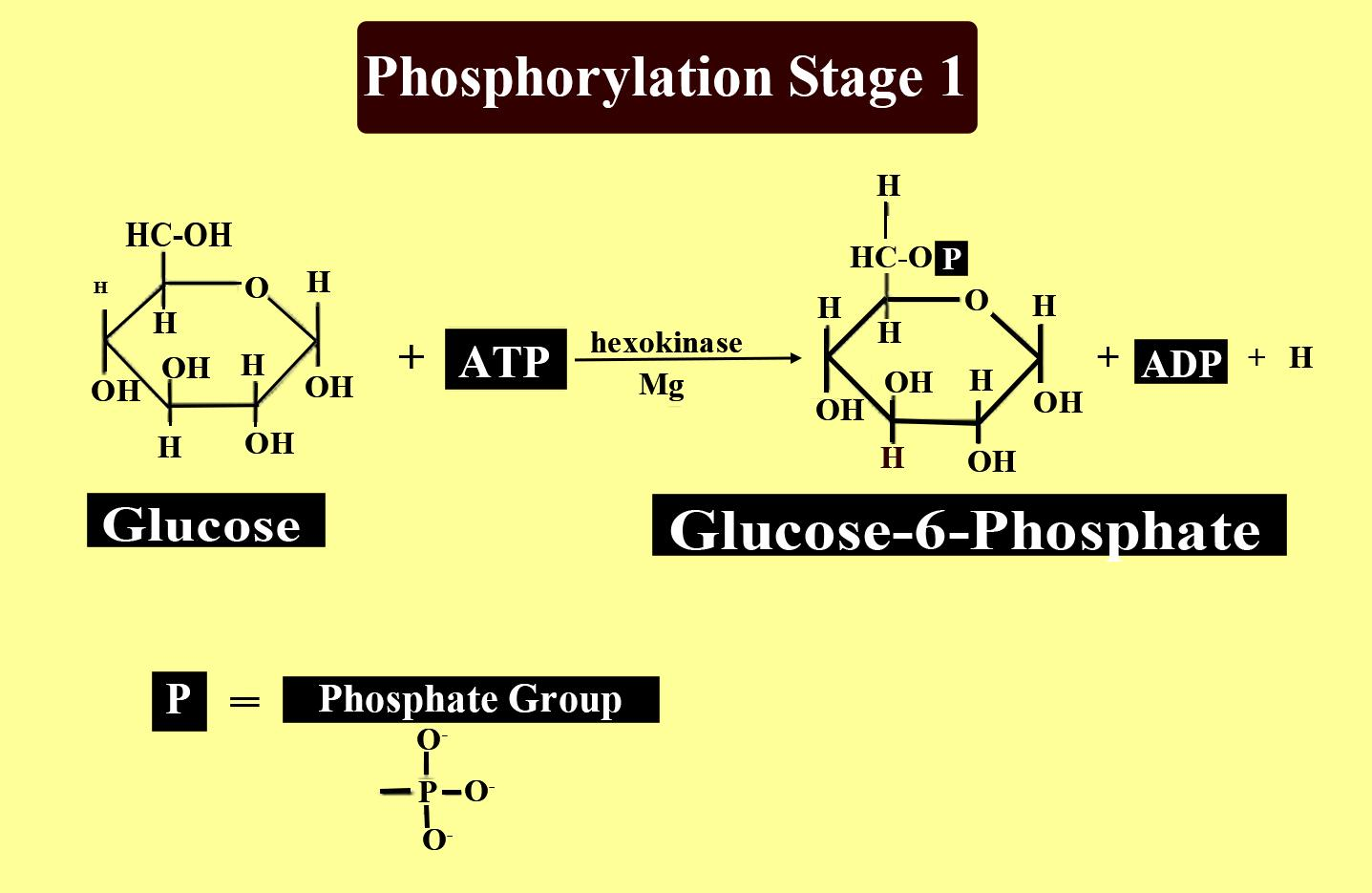
phosphorylation of glucose with the help of ATP and hexokinase produces
A)Glucose 1- phosphate
B)Glucose 6-phosphate
C)Glucose 1,6-bisphosphate
D)Fructose 1,6-bisphosphate
Answer
563.1k+ views
Hint: It is a product of gluconeogenesis and also serves as a substitute for glucose 6 phosphatase in the liver. It is the intracellular form of blood glucose. They are expressed in high levels in the liver and kidney.
Complete answer:
Glycolysis involves 9 reactions that convert glucose into pyruvate. Glucose is found in blood and it is a six-membered ring molecule and usually formed by the breakdown of carbohydrate and sugar.
-It enters the cell through a transporter protein. All the glycolytic enzymes are found in the cytosol.
-Glucose ring is phosphorylated in the first step of glycolysis. The process of the addition of a phosphate group to a molecule that is derived from the ATP is called Phosphorylation. So, one molecule of ATP has been already consumed at this point in the glycolysis process. Hexokinase acts as a catalyst in this reaction.
-Hexokinase as suggested is an enzyme that accelerates the process of the addition of phosphate of glucose. The final product of this process is a molecule called glucose -6- phosphate. The name it gets is due to the 6th carbon of the glucose across the phosphate group.
Additional Information: -The next step of glycolysis comprises the change of glucose 6 phosphate to fructose 6 phosphate and phosphoglucose isomerase enzyme acts as a catalyst for this reaction.
-The third step involves the conversion of fructose 6 phosphate to fructose 1 6 by phosphate which is similar to the reaction of step 1 of glycolysis. This second molecule of ATP gives the phosphate group and is added onto the F6P molecule.
So, the correct answer is, "Glucose 6-phosphate".
Note: -The initial process occurs in the cytosol of cells and requires glucose as well as an ATP molecule for the energy to begin the process of glycolysis.
-Hexokinases require divalent magnesium ions as a cofactor for the catalysis of reaction.

Complete answer:
Glycolysis involves 9 reactions that convert glucose into pyruvate. Glucose is found in blood and it is a six-membered ring molecule and usually formed by the breakdown of carbohydrate and sugar.
-It enters the cell through a transporter protein. All the glycolytic enzymes are found in the cytosol.
-Glucose ring is phosphorylated in the first step of glycolysis. The process of the addition of a phosphate group to a molecule that is derived from the ATP is called Phosphorylation. So, one molecule of ATP has been already consumed at this point in the glycolysis process. Hexokinase acts as a catalyst in this reaction.
-Hexokinase as suggested is an enzyme that accelerates the process of the addition of phosphate of glucose. The final product of this process is a molecule called glucose -6- phosphate. The name it gets is due to the 6th carbon of the glucose across the phosphate group.
Additional Information: -The next step of glycolysis comprises the change of glucose 6 phosphate to fructose 6 phosphate and phosphoglucose isomerase enzyme acts as a catalyst for this reaction.
-The third step involves the conversion of fructose 6 phosphate to fructose 1 6 by phosphate which is similar to the reaction of step 1 of glycolysis. This second molecule of ATP gives the phosphate group and is added onto the F6P molecule.
So, the correct answer is, "Glucose 6-phosphate".
Note: -The initial process occurs in the cytosol of cells and requires glucose as well as an ATP molecule for the energy to begin the process of glycolysis.
-Hexokinases require divalent magnesium ions as a cofactor for the catalysis of reaction.

Recently Updated Pages
Master Class 12 Business Studies: Engaging Questions & Answers for Success

Master Class 12 Economics: Engaging Questions & Answers for Success

Master Class 12 English: Engaging Questions & Answers for Success

Master Class 12 Maths: Engaging Questions & Answers for Success

Master Class 12 Social Science: Engaging Questions & Answers for Success

Master Class 12 Chemistry: Engaging Questions & Answers for Success

Trending doubts
What is meant by exothermic and endothermic reactions class 11 chemistry CBSE

Which animal has three hearts class 11 biology CBSE

10 examples of friction in our daily life

One Metric ton is equal to kg A 10000 B 1000 C 100 class 11 physics CBSE

1 Quintal is equal to a 110 kg b 10 kg c 100kg d 1000 class 11 physics CBSE

Difference Between Prokaryotic Cells and Eukaryotic Cells




